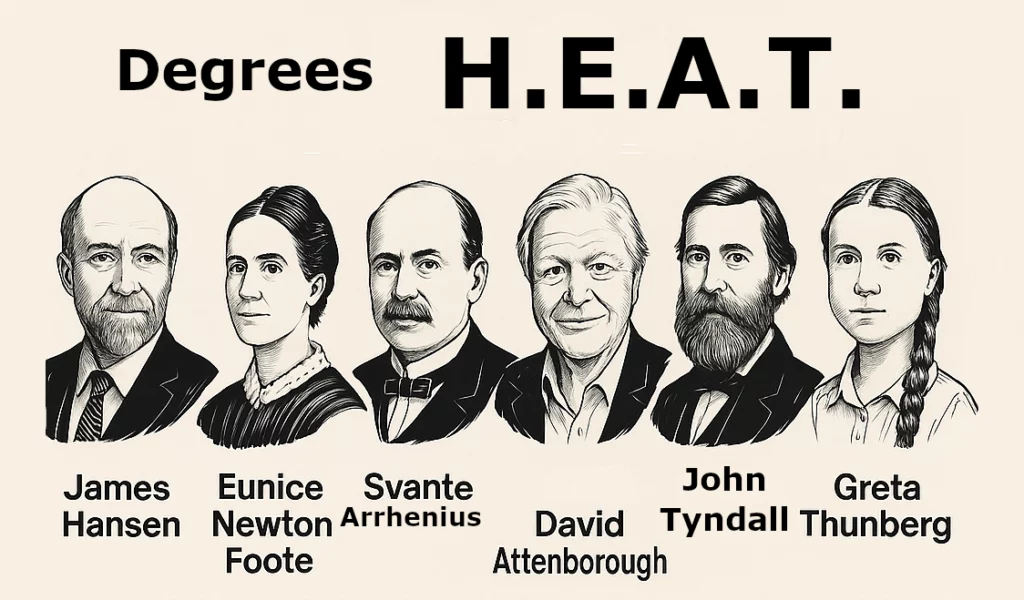What is a Degree H.E.A.T. and Why Does It Matter?
When we talk about global warming, the numbers may seem small: 0.5°C, 1.5°C, or 2°C above pre-industrial levels. But behind these modest figures lies an enormous amount of energy. That’s why we created a new way of expressing this phenomenon: the H.E.A.T. degree.
What is a H.E.A.T. Degree?
The term “H.E.A.T.” honors six key figures in climate science and environmental awareness:
- H – James Hansen
- E – Eunice Newton Foote
- A – Svante Arrhenius and David Attenborough
- T – John Tyndall and Greta Thunberg
This acronym also coincides with the English word heat, emphasizing the concept of warming.
The H.E.A.T. degree has two definitions: absolute and relative.

Absolute Definition
In absolute terms, 1°C of global temperature increase equals 10 million H.E.A.T. degrees.
This unit is not meant for measuring the daily weather in a city — for example, 25°C or 30°C — but exclusively for discussing global warming.
The scale is relevant for temperature rises between 0.1°C and 5°C, the range used by scientists to warn about dangerous warming thresholds.
For example:
- 1.5°C of warming = 15 million H.E.A.T. degrees
- 2°C of warming = 20 million H.E.A.T. degrees
This makes the numbers more striking and easier for the public to grasp.
Relative Definition
In relative terms, 1 H.E.A.T. degree is the amount of heat the Earth’s biosphere gains in one minute due to global warming.
That means:
- 60 H.E.A.T. degrees per hour
- 1,440 H.E.A.T. degrees per day
How much energy is that? Scientists compare it to the detonation of atomic bombs. In the 1980s, the warming rate was estimated to equal 3 Hiroshima-sized nuclear explosions per second. Later, this rose to 4. Recent research led by Kevin Trenberth (published in Advances in Atmospheric Sciences, 2022) estimates it at 7 such explosions every second.
The number may change as warming accelerates, which is why this definition remains adjustable based on the latest scientific findings.
Why Create the H.E.A.T. Degree?
The goal is to make global warming more tangible.
Saying the planet has warmed by “1.5°C” may not feel urgent. But saying it has warmed by 15 million H.E.A.T. degrees — or that every second the atmosphere gains heat equivalent to 7 nuclear bombs — creates a much stronger visual and emotional impact.
By using this new unit, we can better communicate the magnitude of the crisis and inspire faster, more decisive action.
